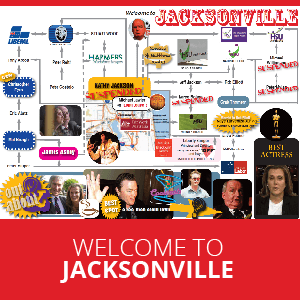But the original intention of the research has taken a strangely perverted course. Pam Sykes has joined the proponents of “adaptive radiation” and “radiation hormesis” - the theory that “low level ionising radiation is good for you” It’s quite an old theory, but now, after Fukushima, it has suddenly become very useful to the nuclear and uranium lobbies.
THE AUSTRALIAN CONNECTION
“There is a strong argument that radiation is good for you”. 13 August 2011. Thus spoke Erica Smith, chair of the uranium company Toro Energy, as she pushed the case for uranium enrichment in South Australia. Smith was addressing the South Australian Chamber of Mines and Energy in Adelaide.
Now where did Erica Smith get that idea?
Perhaps from Sir Ernest Rock Carling, first Chairman of The International Commission on Radiological Protection, who stated, in the 1930s:
“It is also to be hoped that, in a limited proportion of cases, these mutations (from nuclear radiation from atomic bomb test fallout) will have a favourable effect and produce a child of genius. At the risk of shocking this distinguished company, I affirm that the mutation that will give us an Aristotle, a Leonardo da Vinci, a Newton, a Pasteur, or an Einstein.”
Well, actually, no. Carling’s view was part of the eugenics movement of that period, and Carling went on to say:
“…will largely compensate for the ninety nine others, which will have much less fortunate effects”.
No, the resource for Erica Smith’s happy view of radiation came from a much more recent source, and much closer to home. The source was Professor Pamela Sykes, recently appointed to the University’s Strategic Professorship in Preventive Cancer Biology in the Flinders Centre for Cancer Prevention and Control. Sykes recently received wide publicity with her statements that the world overreacted to the Chernobyl nuclear accident. She minimised the ill effects of Chernobyl radiation and supported the view of low level radiation as beneficial to human health. For example, the idea that low dose radiation may prevent or delay the onset of cancer, and may treat diabetes and arteriosclerosis. Professor Sykes and her team are currently examining low dose radiation therapy in reducing or preventing prostate cancer, with a grant from the Prostate Council Foundation of Australia.
Now, where did Professor Sykes get that from? Well, from her research at Flinders University — on mice.
It turns out that Pam Sykes is part of a global group of scientists who believe in “radioadaptive response” and “radiation hormesis” — the idea that low level radiation is beneficial to human health.
THE HISTORY OF “RADIATION IS GOOD FOR YOU”
It‘s an idea that was promoted enthusiastically, for years, by Bruno Comby of Environmentalists for Nuclear Power, based in France. Not a very reliable source, as Comby was known for selling his “Comby Stressometer” a quack diagnostic medical device, somewhat similar to the Scientology’s quack “e-Meters”.
The ‘radiation is good for you’ theme has simmered along for a decade. But suddenly, now, post-Fukushima, it has taken on a new and urgent lease of life.
And some very high sounding persons – in Canada, USA, Japan, Iran, and yes, Australia – are on the “bless radiation” bandwagon. I mention just a few of them here:
Bobby R. Scott, Ph.D. Lovelace Respiratory Research Institute, Albuquerque NM, USA, contractor for USA Department of Energy; John Leslie Redpath, a professor of radiation oncology at the University of California; Dr Kazuo Sakai,Central Research Institute of Electric Power Industry (CRIEPI); Javad Mortazavi, Biology Division, Kyoto University of Education, Kyoto (previously of Iranian Nuclear Regulatory Authority (INRA)).
Their common theme is that they reject the accepted theory of low level radiation – the ‘Linear no-threshold model’ – that with each increase in radiation comes increased risk of damage to body cells and thereby increased risk of mutation and cancer.
They are the “radiation sceptics”, very much comparable to “climate change sceptics”. Their belief in “radiation hormesis” is comparable to “intelligent design” — as opposed to evolution.
Their common funding sources are nuclear energy agencies — in particular the USA Department of Energy (DOE).
“RADIOADAPTIVE RESPONSE” AND “RADIATION HORMESIS” ARE REJECTED BY THE GLOBAL SCIENTIFIC COMMUNITY
Their complex arguments have been widely refuted by the mainstream of radiation researchers. From Wikipedia:
“Consensus reports by the United States National Research Council and the National Council on Radiation Protection and Measurements and the United Nations Scientific Committee on the Effects of Atomic Radiation (UNSCEAR) have upheld that insufficient human data on radiation hormesis exists to supplant the Linear no-threshold model (LNT). Therefore, the LNT continues to be the model generally used by regulatory agencies for human radiation exposure.
“The notion of radiation hormesis has been rejected by the National Research Council's (part of the National Academy of Sciences) 16-year-long study on the Biological Effects of Ionizing Radiation.
"The scientific research base shows that there is no threshold of exposure below which low levels of ionizing radiation can be demonstrated to be harmless or beneficial.”
Now, I am no radiological expert – as just one example – I can understand that Pam Sykes’ research, on mice, focused on external radiation emitters. The DOE gave her the experiment design and she did not vary it. She did not look at internal emitters at all.
External radiation emitters are what populations were exposed to when the atomic bombs were detonated over Hiroshima and Nagasaki in 1945; their profound and on-going medical effects are well documented. (References: See, for example, WJ Schull, Effects of Atomic Radiation: A Half-Century of Studies from Hiroshima and Nagasaki (New York: Wiley-Lis, 1995) and DE Thompson, K Mabuchi, E Ron, M Soda, M Tokunaga, S Ochikubo, S Sugimoto, T Ikeda, M Terasaki, S Izumi et al. "Cancer incidence in atomic bomb survivors, Part I: Solid tumors, 1958-1987" in Radiat Res 137:S17-S67 (1994).)
Internal radiation, on the other hand, emanates from radioactive elements which enter the body by inhalation, ingestion, or skin absorption. These elements – called internal emitters – migrate to specific organs such as the thyroid, liver, bone, and brain, where they continuously irradiate small volumes of cells with high doses of alpha, beta and/or gamma radiation, and over many years, can induce uncontrolled cell replication—that is, cancer.
HOW PAM SYKES HAS CHANGED DIRECTION (SUITING THE NUCLEAR LOBBY)
Early on in her research, Pam Sykes was following up the idea that human individuals vary in their susceptibility to low level radiation — that some are more susceptible than others.
Dr Sykes’ current view deviates markedly from the statements she made prior to the signing of the 2001 US Department of Energy research contract which funded her. US DOE still funds her. The aim of the original funding as authorised by President Clinton was in service of US Downwinder victims.
In 2001, Dr Sykes and Flinders University issued a press release which stated in part:
“One aspect of the research will explore the possibility of genetic predisposition (susceptibility to a specific disease) to radiation-induced damage and will involve mice that have a defective gene that makes them more sensitive to radiation.
“We know that the same gene in humans does the same thing.
“So one of the things the U.S. Department of Energy wants to look at is the possibility that there is a subset (a set within a larger set) of the population which is more sensitive than other people. If you have a limit based on the whole population but some the population are more sensitive, then perhaps you need a lower limit.”
(Source: Flinders University press release, 2001, as published by the Atomic ExServicemen’s Association.)
CONCERN OVER THE SIGNIFICANCE OF RADIATION DENIALISM
Sykes, Scott, and the rest of the DOE funded researchers are now being viewed with some alarm. To quote just two examples from their critics:
“Sykes is one of hundreds of researchers funded all over the world by DOE. B. Scott appears to be the DOE contracted mentor, for he pops up as co-author in very many early papers by recent DOE recruits. Throughout the USA the US EPA has conducted radon/lung cancer surveys which are published. These surveys show lung cancer rates are proportionate to dose. There is no evidence of cancer resistance due to radon exposure which is what Scott promulgates citing Japanese surveys.”
(‘Radiation dose: Threshold or no threshold?’; by de Saint-Georges; in Low-dose ionizing radiation exposure: Understanding the risk for cellular transformation; Department of Radiobiology, Mol, Belgium.)
“Hormesis is just bad science. Studies are fraudulent - consisting of comparisons between populations without control for the age group and smoking. As typical in scientific fraud, research conclusions focus entirely on the non-scientific aspects such as safety policies, entirely ignoring the scientific implications (if the response is not linear, then you have to throw entire concept of dose out of the window. It is only the linear no threshold response model under which all kinds of ionizing radiation are equivalent (up to the scaling factor)). To put it very bluntly, there's all reasons to think that hormesis proponents are not merely mistaken, but are actively lying. A genuinely mistaken scientist explores the scientific consequences of his erroneous research. A fraudster, on other hand, focuses solely on promoting the policy changes which he wants to enact through his fraud, and shies away from the scientific implications of his research; for the science is interlinked, and scientific implications of fraudulent research would contradict a lot of other, seemingly unrelated experiments and knowledge.”
(‘Radiation hormesis: contradicts all we know about evolution, can be shown false with elementary physics and math.’)









